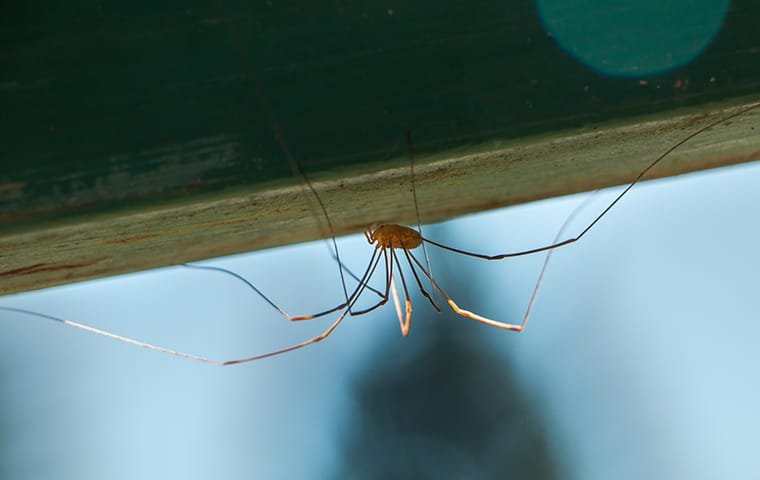

You would think that creatures with legs like these arachnids have would move around quite a bit, but that’s not the case. Or perhaps they are trying to bolster their chemical defenses.” 8. “Perhaps they are ‘herding’ to lower their individual chances of being eaten. “Perhaps they do this when conditions become dry and they need to maintain high humidity,” he said. This clumping is pretty typical daddy longleg behavior, Clouse said, and though scientists don’t know for sure why they do this, they do have some ideas. Sometimes daddy longlegs hang out in big clumps. “They have so many strange aspects, it's difficult to think of a type that isn't interesting,” Clouse said. In Laos, a species with a legspan of 13 inches was discovered in 2012, while those in the family Gonyleptidae, which live in South America, have spines and vibrant colors. The type that Clouse studied, called cyphos, are tiny and have short, thick legs. In Pennsylvania, they have tiny pod-like bodies and long legs. “They are generally very, very bad at getting around, so they tend to have lots of species, because the minute a river flows between two different populations or a mountain rises and cuts one population off from another population, they split into two new species.” For example, the closest relatives to the arachnids he studied in South Carolina live in West Africa, which were all one species before the continents split and the Atlantic Ocean sprang up between them.īecause of this tendency to split off into new species, daddy longlegs can look very different depending on where they live, and each species will have a very small range: “One mountain top will have one species, another mountain top will have another species,” Clouse said. “We’re describing new ones all the time,” Clouse said. There might be as many as 10,000 species of daddy longlegs, with 6000 to 7000 currently described.
#Daddy long legs spider pictures plus#
LeoMercon // iStock via Getty Images Plus Daddy longlegs come in many different varieties.Ī Gonyleptidae harvestman in Brazil. we have some tiny ones in the leaf litter that the average person never sees.” 6. Different regions of the world have their own particular daddy longlegs, and some of the most common ones are small and out of sight in the leaf litter on the forest floor.

“They are most diverse in tropical areas, where the moist climate and thick foliage allow them to live in lots of places. “They’re usually found in humid areas, such as under rocks, in leaf litter, and inside caves,” Clouse said. These arachnids can be found on every continent but Antarctica. In Europe, terms like ‘harvestmen’ and ‘shepherd spiders’-and even their scientific name, Opiliones-refer to them as being associated with good pasture, harvest season, or perhaps even their resemblance to shepherds on stilts or the shape of a scythe.” 5. "So, the large, short-legged forms in South America are often referred to by their pungent odors. “In other regions, their common names reflect different attributes found in the species common to those areas," Clouse said. But there are different names for them around the world. In North America, the reason for at least part of their name is pretty obvious-the species we see most frequently have very long, thin legs. To put this in perspective, this is about 200 million years before dinosaurs appeared, which were only around for about 165 million years.” 4. It is believed daddy longlegs split off from scorpions, which were becoming terrestrial about 435 million years ago. “This fossil actually looks a lot like the long-legged species we see today. “We know from a very well preserved fossil of a daddy longlegs from Scotland that they are at least 400 million years old,” Clouse said. And, if that's not confusing enough, there's another creature that sometimes goes by the name daddy longlegs: The crane fly. According to Clouse, the rumor might have gotten started during “the retelling by an American tabloid of a study in Australia on the venom of a daddy longlegs there the problem is that in Australia, ‘daddy longlegs’ refers to a type of spider,” also known as the cellar spider ( Pholcus phalangioides). They don't even have fangs, and they can't make venom, either.

That thing you heard at summer camp about daddy longlegs being the most poisonous creature in the world, but with fangs too weak to bite you? Not true. randimal // iStock via Getty Images Plus


 0 kommentar(er)
0 kommentar(er)
